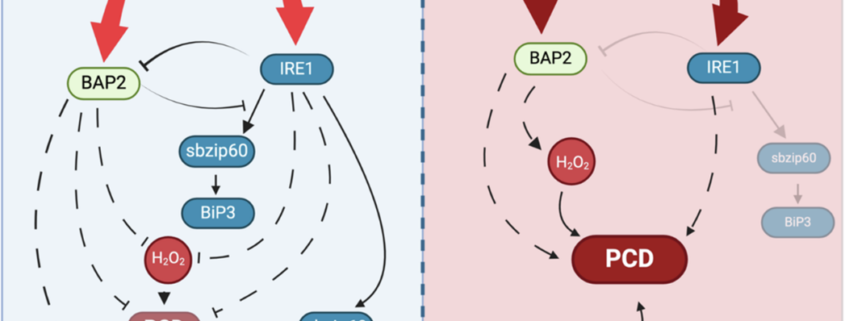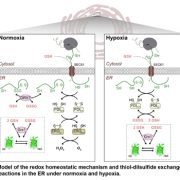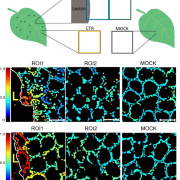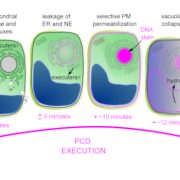Plant rheostat BAP2 determines the direction of ER stress tolerance mechanisms
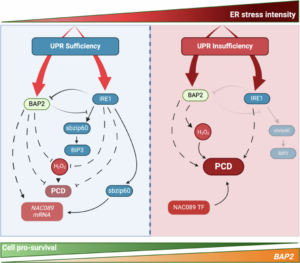 When protein folding is disrupted by abiotic or biotic stresses, cells can experience ER stress. Sensors like inositol-requiring enzyme 1 (IRE1) detect this stress, triggering the unfolded protein response (UPR) pathway. UPR signaling activates genes that restore proteostasis and maintain cellular vitality. However, under chronic ER stress, a pro-death strategy is initiated, leading to programmed cell death. But which route is taken and how this is controlled at the molecular level has been a long-standing question in ER stress research. Recently, Pastor-Cantizano and colleagues made a significant discovery in this area. They utilized the natural genetic variation in Arabidopsis to perform ER stress sensitivity assays, coupled with quantitative trait locus analyses, identifying BON-ASSOCIATED PROTEIN2 (BAP2) as a key player. Their analysis of bap2 mutants, combined with other UPR pathway components, revealed that BAP2 directs the UPR away from pro-death strategies when the stress is manageable. Conversely, under chronic stress, when the UPR can no longer sustain a pro-life response, BAP2 activates programmed cell death. This novel function of BAP2 as a rheostat, acting as a decision-maker depending on stress strength and duration, is just the beginning of unraveling the regulatory mechanisms controlling ER stress in plants. (Summary by Thomas Depaepe @thdpaepe). Nature Comms 10.1038/s41467-024-50105-6
When protein folding is disrupted by abiotic or biotic stresses, cells can experience ER stress. Sensors like inositol-requiring enzyme 1 (IRE1) detect this stress, triggering the unfolded protein response (UPR) pathway. UPR signaling activates genes that restore proteostasis and maintain cellular vitality. However, under chronic ER stress, a pro-death strategy is initiated, leading to programmed cell death. But which route is taken and how this is controlled at the molecular level has been a long-standing question in ER stress research. Recently, Pastor-Cantizano and colleagues made a significant discovery in this area. They utilized the natural genetic variation in Arabidopsis to perform ER stress sensitivity assays, coupled with quantitative trait locus analyses, identifying BON-ASSOCIATED PROTEIN2 (BAP2) as a key player. Their analysis of bap2 mutants, combined with other UPR pathway components, revealed that BAP2 directs the UPR away from pro-death strategies when the stress is manageable. Conversely, under chronic stress, when the UPR can no longer sustain a pro-life response, BAP2 activates programmed cell death. This novel function of BAP2 as a rheostat, acting as a decision-maker depending on stress strength and duration, is just the beginning of unraveling the regulatory mechanisms controlling ER stress in plants. (Summary by Thomas Depaepe @thdpaepe). Nature Comms 10.1038/s41467-024-50105-6


